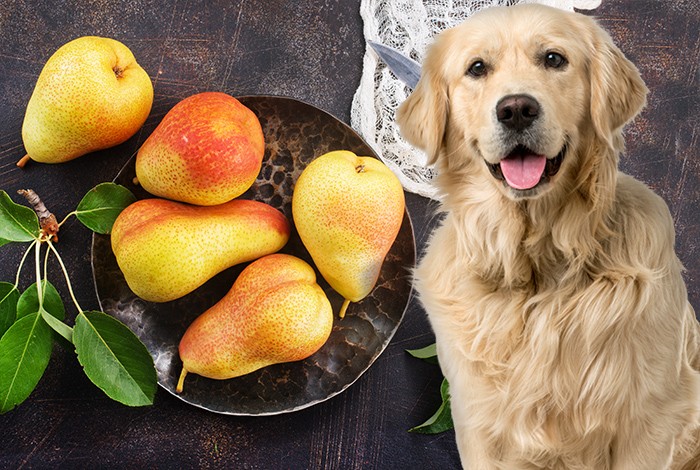Can dogs eat pears? Yes, pears are a healthy fruit snack for dogs since they are packed with fiber, vitamins A, C, and K, as well as calcium and potassium. However, make sure to remove the seeds, as they are toxic to dogs and can cause choking if swallowed.
In this article, you will learn the dos and don’ts of preparing pears for your furry companion.
Is pear good for dogs?
Pears are a healthy snack for dogs. Like citrus fruits, pears are rich in vitamins and essential nutrients that boost your dog’s immune system and keep your dog healthy.
Here are the vitamins and minerals found in pears and the health benefits they offer:
Vitamin A
- Improves the immune system and eyesight
- Strengthens bones and muscles
- Keeps skin and coat healthy
Vitamin C
- Boosts the immune system
- Promotes healthy joints
Vitamin K
- Plays an essential role in blood clotting and bone metabolism
- Regulates blood calcium levels
Calcium
- Strengthens teeth and bones
Carbohydrates
- Adds extra energy to your dog
Copper
- Enhances the immune system
- Promotes a shiny coat
- Aids in bone development
Dietary Fiber
- Promotes smooth digestion
- Aids in making stools firmer
Potassium
- Helps maintain efficient muscle and nerve functions
- Manages fluid balance
Are pears safe for dogs to eat?
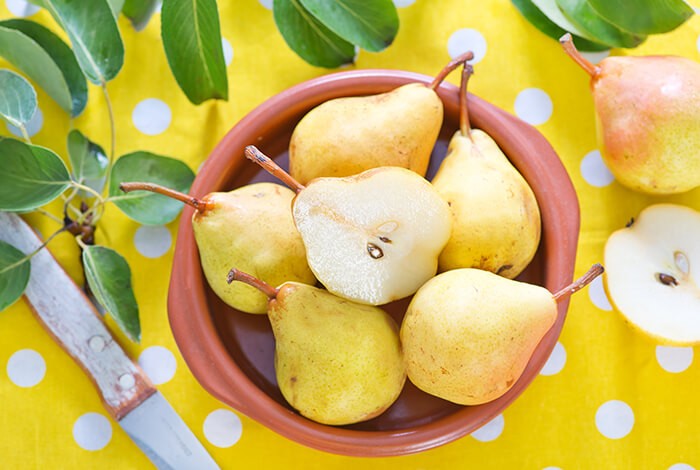 Pears are safe for dogs to eat. They make delicious fruity dog treats. However, there are a few risks you should know to avoid accidents when feeding your dog pears. Below are the things you need to watch out for:
Pears are safe for dogs to eat. They make delicious fruity dog treats. However, there are a few risks you should know to avoid accidents when feeding your dog pears. Below are the things you need to watch out for:
Cyanide Toxicity
Pear seeds contain traces of cyanide which is toxic to dogs. So, remove the seeds before feeding the pear to your dog.
If you suspect that your dog has consumed pear seeds, observe for symptoms of cyanide poisoning, such as breathing difficulties, dilated pupils, bright red gums, and shock. Bring your dog to the vet right away. A delay could lead to severe consequences.
High in Sugar
The natural sugar content in pears is relatively high. One hundred grams of fresh raw pears contain 9.75 grams of sugar. Be sure to limit the number of slices of pears you give to your dog. Excessive feeding can lead to an upset stomach and even weight gain.
Diabetic dogs should be kept away from pears as well. That’s because the fruit’s sugar content can spike their blood sugar levels. Avoid canned pears because they have a higher sugar content than fresh pears, making them very unhealthy for dogs.
Food Allergy
It is rare for dogs to be allergic to pears. Regardless, it would be best to take precautions before serving them to your furry companion. Introduce the fruit to your dog in small amounts.
Look for any signs of allergic reactions, including hives, itching, swelling, inflamed skin, vomiting, and diarrhea. If these symptoms manifest, take him to the vet immediately.
Choking Hazards
Do not feed your dog pear seeds and core. If you got the fruit from the tree, remove the stems and leaves. These are considered choking hazards for dogs.
Cut pears into bite-sized pieces to prevent them from getting stuck in your dog’s windpipe.
Dangerous Pears
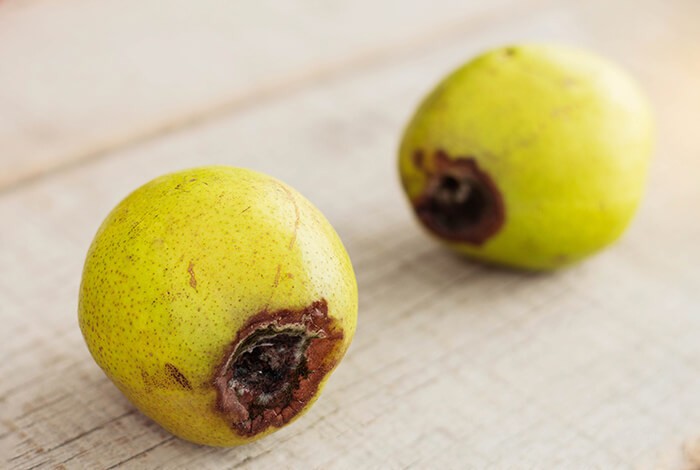 Be extra careful when picking pears. Choose fresh and ripe ones. Avoid pears that are rotten, unripe, and have molds, as they can cause digestive upset.
Be extra careful when picking pears. Choose fresh and ripe ones. Avoid pears that are rotten, unripe, and have molds, as they can cause digestive upset.
Can dogs have pears, and how much can they have?
 Dogs can eat pears but in moderation. Ideally, small dogs can have up to 1-2 slices of pear. On the other hand, share no more than 3 slices with larger dogs.
Dogs can eat pears but in moderation. Ideally, small dogs can have up to 1-2 slices of pear. On the other hand, share no more than 3 slices with larger dogs.
Remember to consult the vet before adding pears to your pet’s meals. If they say it’s okay for him to consume the fruit, avoid serving them in large amounts, especially if it’s your dog’s first time eating pears.
Dogs have sensitive stomachs, and introducing new food can easily cause problems to the dog’s digestive system.
Can puppies eat pears?
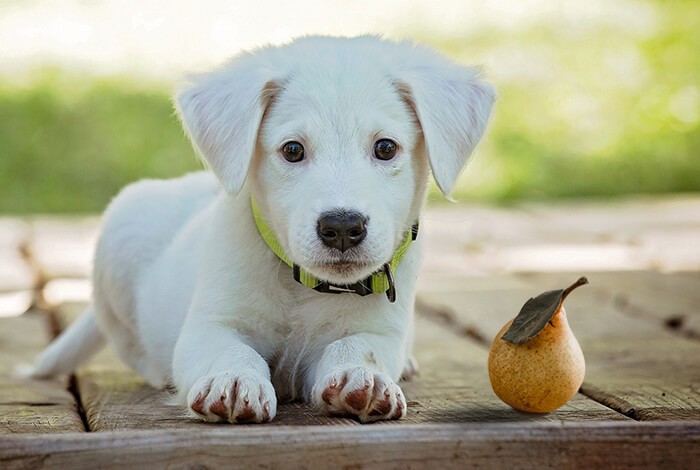 Yes, puppies can eat pears, but in minimal amounts. They should only be served as an occasional treat. Puppies need to follow specific dietary requirements for their bodies to develop properly. The largest part of their nutrition should come from their puppy food.
Yes, puppies can eat pears, but in minimal amounts. They should only be served as an occasional treat. Puppies need to follow specific dietary requirements for their bodies to develop properly. The largest part of their nutrition should come from their puppy food.
Can a dog eat pear skin?
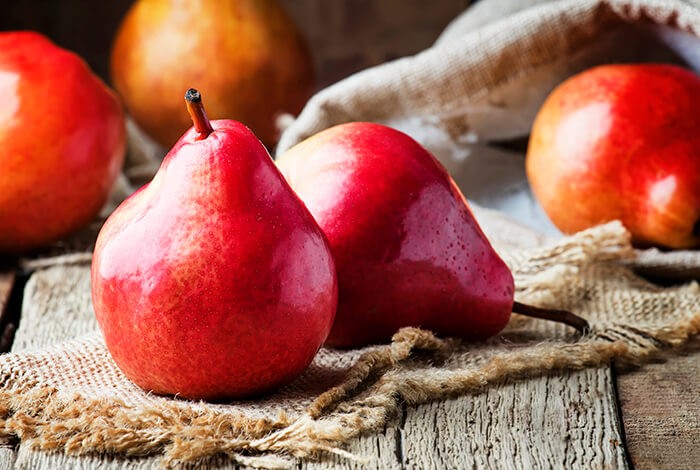 Yes, dogs can eat pear skin, but it should be washed thoroughly before serving to remove any harmful chemicals, dirt, and bacteria found on the pear skin.
Yes, dogs can eat pear skin, but it should be washed thoroughly before serving to remove any harmful chemicals, dirt, and bacteria found on the pear skin.
Organic pears are recommended as they are less exposed to chemicals such as pesticides. In addition, it is a healthier option compared to regular pears and less likely to disrupt the digestive system.
Can dogs eat Asian pears?
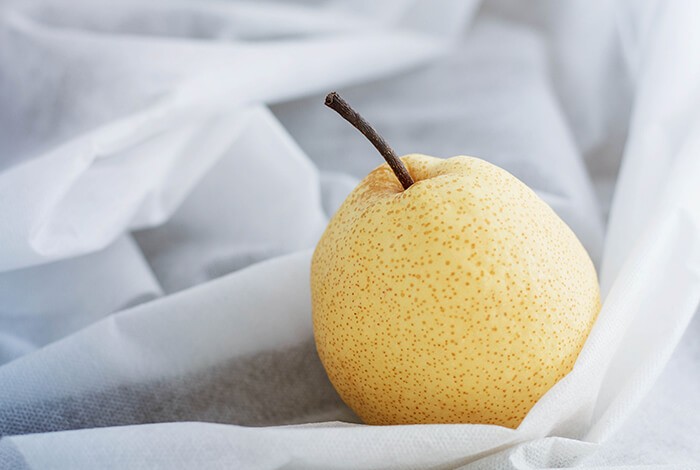 Asian pears or Korean pears are safe for dogs to eat, but since they are high in sugar content, feed them to your dog sparingly. Here are other types of pears that can be given as an occasional treat for dogs:
Asian pears or Korean pears are safe for dogs to eat, but since they are high in sugar content, feed them to your dog sparingly. Here are other types of pears that can be given as an occasional treat for dogs:
- Forelle Pear
- Bosc Pear
- Bartlett Pear / Williams Pear
- Taylor’s Gold Pear
- Anjou Pear
- Comice Pear
- Concorde Pear
- Seckel Pear
- French Butter Pear
How to prepare pears for my dog?
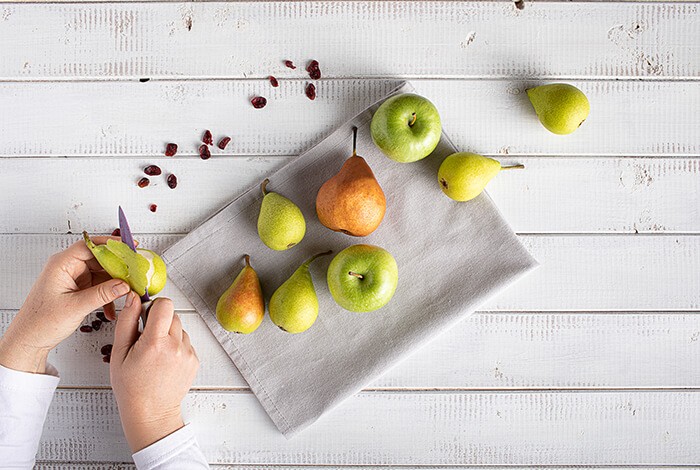 Here is a quick guide to help you safely prepare pears for your pooch:
Here is a quick guide to help you safely prepare pears for your pooch:
- Opt for organically grown fresh pears.
- Check for any molds.
- Remove leaves or stalks.
- Wash the fruit thoroughly.
- Slice the pear down the middle.
- Cut one half into two pieces.
- Remove the seeds.
- Remove parts of the core.
- Cut each piece into 1-inch slices.
- Serve it to your dog!
Homemade Pear Dog Treats
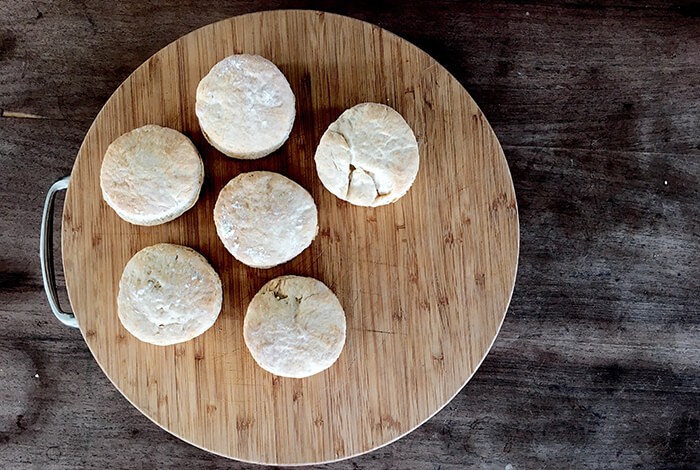 Transform simple and plain slices of pears into mouth-watering dog treats with this recipe:
Transform simple and plain slices of pears into mouth-watering dog treats with this recipe:
 Pear Coconut Biscuits
Pear Coconut Biscuits
Ingredients
- 1/2 cup of coconut flour
- 1/2 cup of fresh pear, pureed
- 1 tablespoon of raw, local honey
- 2 tablespoons of virgin, unrefined coconut oil
- 3 tablespoons of water
Procedures
- Preheat the oven to 350F.
- Combine all the ingredients in a large bowl.
- Mix until well-incorporated.
- Line a cookie sheet with parchment paper.
- Roll the dough into small balls and place them on parchment paper.
- Bake in the oven for 10 minutes.
- Take it out of the oven and allow it to cool.
- Place leftovers in an airtight container and store them in the fridge.

